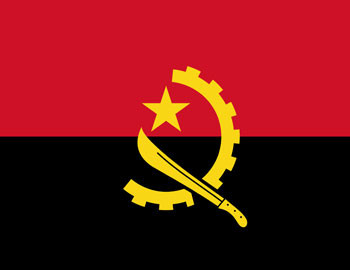

Coin of the World Series continues its investigation on world money. In this part, we uncover a highly multiethnic country’s currency, known for traditional art, oil, and diamonds. Angola, or officially the Republic of Angola, is located in the southwestern part of Africa. A large country, Angola boasts of a wide variety of landscapes, including the Atlantic Ocean and Namibia desert, rugged highlands, sparsely populated rainforest interiors and thickly populated towns and cities. Let’s get on now with the vital part of this topic – Coins of Angola.
Angola was first established as a Portuguese colony in 1575; its status was upgraded to an overseas province in 1951. During much of its colonial period, the monetary system was the same as Portugal’s, using the milreis and the centavo. In 1911, the milreis was replaced at par with the escudo. In 1926, the Portuguese replaced the escudo at par with the angular. At the same time, the macuta, one of the local coins of Angola, was also introduced. It equaled to five centavos. The escudo was reintroduced in 1958.
Although Angola gained independence in 1975, it continued to use the escudo until 1977. In that year it was replaced by the kwanza, divisible into 100 lwei (also spelled lwee, lewys for the plural). These names were taken from two rivers – the Kwanza (also spelled Cuanza), one of the country’s main rivers, and the Lwei, a tributary of the Kwanza. All the first coins of Angola bore the date of independence ’11 de Novembro de 1975’. There came in denominations of 50 lwei, 1, 2, 5 10 and 20 kwanza.
Since the introduction of the kwanza, high inflation has caused several changes. The novo, or new kwanza replaced the kwanza at par in 1990. In 1995 the kwanza reajustado, equal to 1000 novo kwanza, was introduced. By 1999 a newer kwanza was initialized which was equal to one million kwanza reajustado. The continuation of inflation has now made the use of lwei impractical.
The dollar sign ($) is used both as the symbol for escudo, and as a decimal point between escudo and the smallest centavo. It should be noted that when it comes to coins of Angola, the abbreviation Ag is for one angular, while Ags is the plural abbreviation.
That’s all from our end folks. Stay with us until next time, where we bring to you the history of coins from all around the world. Do let us know what you think about this series. We welcome suggestions.
The Mintage World Team comprises of experts, researchers and writers from the field of Philately, Notaphily and Numismatics who try to shed light on some of the most interesting aspects of coins, banknotes and stamps from not just India but across the globe as well.